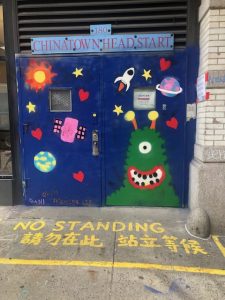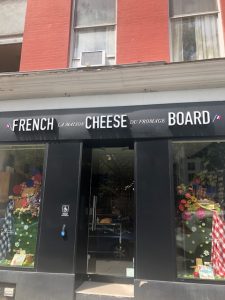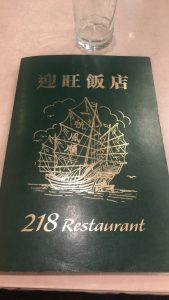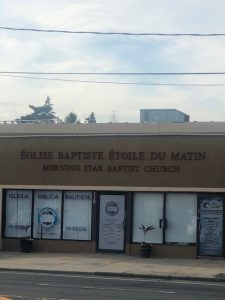There are many linguistic landscapes which exist in New York City. While some are amazing tourist destinations, like Chinatown or Little Italy, most linguistic landscapes in New York are created solely for the ethnic population which resides within them. Although the commercial commodification of language is very prevalent in New York City, I believe that many of the linguistic landscapes within New York represent the needs of the people occupying the area rather than the corporations which might want to exploit it.
For my project on linguistic landscapes, I traveled through various areas in order to collect data about the different uses of language present in the signage and symbology of New York City. To create a thorough comparison of the use of language, I walked through the typical tourist destinations of Little Italy and Chinatown, but I also explored an area of Long Island called “Hempstead” which, unbeknownst to me, was a mecca for Hispanic culture.
While I explored the areas of Little Italy and Chinatown, I was very cognizant to remember the article by Leeman and Modan in order to see if I could better understand the usage of language in these areas. I expected the areas to be similar to the Chinatown in Washington, D.C. because, as the authors suggested, “consumption becomes culture, and culture becomes consumption” (Leeman and Modan, 2009, 338). In other words, because of the massive tourist appeal of these areas, I
believed that the areas would use the culture and language of China and Italy only for the purpose of profit and business. While there were instances of this commercial commodification, as represented by a nearby Citibank using Chinese lettering in its marquee, or by the French pastry shop which was clearly not serving any french customers (figure 1), I was surprised by the overwhelming diversity of the people who were present in the area. Because the areas of Chinatown and Little Italy are extremely close in proximity (and oftentimes overlap), I found people of all ethnic backgrounds and heard a variety of languages being used there.
I was surprised to find that despite the tourist appeal, the majority of the buildings seemed to cater specifically to Chinese (figure 2 and 3) or Italian clientele. This is a massive difference from the conditions of the Chinatown described in D.C., as the history and culture of the area which fostered the amazing diversity remained essential to the city and was not solely an artifact.


That being said, although the linguistic landscapes of Little Italy and Chinatown were authentic insofar as the languages and symbols being used were important to the functioning of the city (and was not simply a marketing tool), the areas themselves are still advertised as tourist destinations rather than as historical areas. While exploring Hempstead, New York, I discovered a completely different kind of linguistic landscape. Hempstead was unique because the linguistic landscape there did not have a marketing strategy or beautiful arcs along the streets. Rather, this linguistic landscape existed solely for the people living there and did not attempt to cater to travelers who might happen to pass through.
Given that the population of Hempstead, NY is 46.6% Hispanic, and only 5.12% White (DataUSA), there is an obvious need for Spanish owned businesses and bi-lingual signage. Unlike the Chinatown in Washington D.C. or the areas of Chinatown and Little Italy in New York, Hempstead was not decorated to resemble a Hispanic town. The usage of language in Hempstead was vastly different because there was no aesthetic purpose for the use- it was only used for the practical purpose of people being able to understand something in their native language.
Within the article by Leeman and Modan, the following quote by Mitchell is used “Landscape is both a place and a ‘way of seeing’” (338). I believe this quote is particularly powerful because it articulates how a linguistic landscape does not exist in a solely physical manner. The linguistic landscape can have varying purposes, and these purposes might change from individual to individual. While exploring the area of Chinatown and Little Italy, I felt ordinary. I was simply another tourist exploring and taking pictures. However, while I was in Hempstead I felt like a stranger. I had walked into a linguistic landscape which served a very different purpose than the areas I had ventured into before. This area was not just a place or a way of seeing, it was a way of living.


Works-cited:
“Hempstead, NY.” Data USA, 2017, datausa.io/profile/geo/hempstead-ny/#demographics.
Leeman, J & Modan, G. (2009), Commodified language in Chinatown: a contextualized
approach to a linguistic landscape. Journal of Sociolinguistics, 13(3), 332-362.
Very interesting and thorough analysis of New York’s linguistic landscape! I enjoyed reading about the different areas of the city you traveled to, and find the differences in tourist-based cultural areas like Chinatown and Little Italy versus more traditional cultural areas like Hempstead very fascinating. I like that you included your perception of if you felt like a tourist when visiting each of these locations as that is a very powerful marker of whether or not the linguistic landscape is commodified!
I can definitely agree to that the languages are used for the need of the people, not just for corporations who want to exploit that. I’ve lived in New York all my life, another place with a complete different linguistic landscape there would be Flushing, Queens! Huge Chinese community in there, signs are written in both Chinese and English. But same as what you said before, these existed for the people LIVING there, not for the travelers.